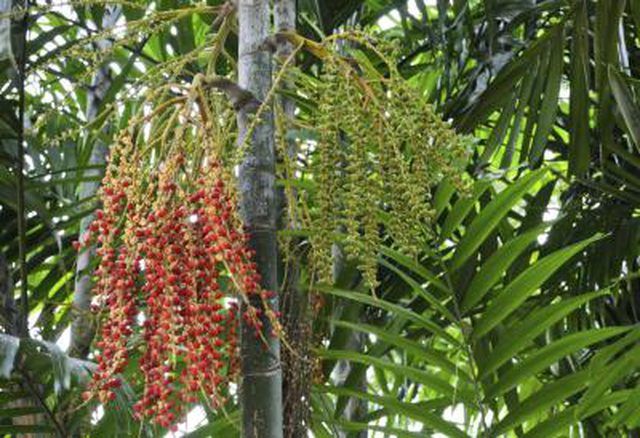Bulbs
Flower Basics
Flower Beds & Specialty Gardens
Flower Garden
Garden Furniture
Garden Gnomes
Garden Seeds
Garden Sheds
Garden Statues
Garden Tools & Supplies
Gardening Basics
Green & Organic
Groundcovers & Vines
Growing Annuals
Growing Basil
Growing Beans
Growing Berries
Growing Blueberries
Growing Cactus
Growing Corn
Growing Cotton
Growing Edibles
Growing Flowers
Growing Garlic
Growing Grapes
Growing Grass
Growing Herbs
Growing Jasmine
Growing Mint
Growing Mushrooms
Orchids
Growing Peanuts
Growing Perennials
Growing Plants
Growing Rosemary
Growing Roses
Growing Strawberries
Growing Sunflowers
Growing Thyme
Growing Tomatoes
Growing Tulips
Growing Vegetables
Herb Basics
Herb Garden
Indoor Growing
Landscaping Basics
Landscaping Patios
Landscaping Plants
Landscaping Shrubs
Landscaping Trees
Landscaping Walks & Pathways
Lawn Basics
Lawn Maintenance
Lawn Mowers
Lawn Ornaments
Lawn Planting
Lawn Tools
Outdoor Growing
Overall Landscape Planning
Pests, Weeds & Problems
Plant Basics
Rock Garden
Rose Garden
Shrubs
Soil
Specialty Gardens
Trees
Vegetable Garden
Yard Maintenance
How to Trim a Palm Tree
How to Trim a Palm Tree. The methods for pruning palm trees differ from those used in pruning branching woody trees. Pithy, nonwoody palm trunks are easily injured by improper pruning, and the trunks lack the ability to branch, although many palms can cluster from the base. In general, perform minimal pruning on palm trees. Palms need their green...

The methods for pruning palm trees differ from those used in pruning branching woody trees. Pithy, nonwoody palm trunks are easily injured by improper pruning, and the trunks lack the ability to branch, although many palms can cluster from the base. In general, perform minimal pruning on palm trees. Palms need their green leaves to make food for the entire tree. If too many are removed, the tree is weakened. Pruning often depends on the kind of palm you have and its landscaping role.
Pruning Tools
Palm trees are vulnerable to several fungal diseases that enter through wounds in the trunk and can kill the tree. To prevent disease spread, clean your pruning tools by soaking them in a solution of half household bleach and half water for five minutes before use. Use conventional straight pruning saws rather than chain saws, which cannot be adequately cleaned. Clean the tools again before moving from one palm to another. Palm trees often have stout spines and sharp leaf edges that can cut skin, so wear long sleeves, long pants and gloves. Use pruning saws for larger cuts and pruning shears for slender growth.
Leaf Removal
Some palms are self-cleaning, which means that the old leaves fall off by themselves. An example is the foxtail palm (Wodyetia bifurcata), which thrives in U.S. Department of Agriculture plant hardiness zones 10 through 11. Remove dead or dying fronds, especially on the tall, self-cleaning royal palm (Roystonea spp.), which grows in USDA zones 10 through 11, since the heavy fronds may cause injury when they drop off. When palm trees become too tall for you to safely prune yourself, call in professional help. Resist the urge to remove green, living leaves. Each palm species has a set number of leaves for optimum health; the palm leaves that die each year are replaced by an equal number of new leaves forming in the crown. If you must remove green leaves, don't remove more fronds in a year than the tree produces during that time. Fronds that point horizontally outward or point upward shouldn't be pruned. Don't wound the palm trunk by pulling or tearing off leaves, or cutting into the trunk with a machete when trimming leaves.
Flower Stalk Pruning
Prune off flower stalks except for palms from which you might wish to harvest fruit, such as date palms (Phoenix dactylifera), which grow in USDA zones 9 through 11 and have invasive tendencies in some areas. Some palm flowers, such as royal palms, are valued for their fragrance, so you can allow flowering, removing the stalks before fruit formation. Removing stalks enhances frond growth because the plant's food isn't diverted to produce flowers and fruits, and also helps prevent litter problems due to falling leaves, fruits and stalks. Use a sharp, bleached pruning saw with an extension if needed to trim away flowering or fruiting stalks.
Offset Removal
At times, some palm species may produce so many offsets that they outgrow their containers, obscure visibility along driveways or become too large for the space allotted to them. Use a clean, bleached pruning saw to remove offsets while they are young so they don't leave large pruning scars. Areca palms (Dypsis lutescens), which grow in USDA zones 10 through 11, send up new stems from underground rhizomes. To thin this type of growth, use a sharp, bleached pruning saw to cut off stems close to the soil.